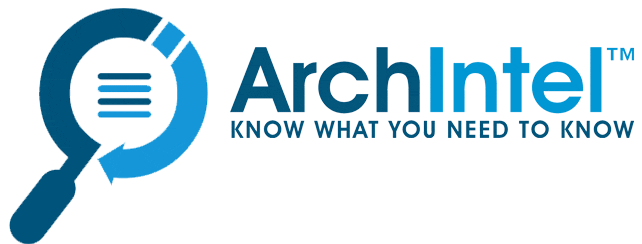Elements of Strategic Planning
When it comes to businesses formulating a plan there’s no better tool than strategic planning. Strategic planning is an organizational tool that helps decision makers organize their research and objectives into a succinct plan that they can carry out throughout their company. In order to take on a big task there are specific elements that make up strategic planning, assuring that each step is given it’s deserved attention.
Business decision making can be a complex task. Taking a plan of action and bringing it to fruition can be a highly influential operation, especially when you consider the effects your decision might have on financial results, consumer perceptions, or operational capabilities. If you move too hastily through your decision making process you may end up with bigger issues than you started with.

What Are The Key Elements of Strategic Planning?
In order to alleviate complexities and minimize continued problems, it is important to follow the strategic planning process and focus on elements that make up an effective strategic plan. The focus on strategic planning elements may change slightly, depending on the intensity of your planning process but here are some of the essential elements you need to consider when carrying out your own strategic plan:
-
Vision
-
Mission
-
Short Term Goals
-
SWOT Analysis
-
Long Term Goals and Annual Objectives
These elements are crucial to understanding the problem at hand and the landscape in which you operate. By accounting for each of these elements, you are assuring the rest of your organization that you have looked deeply into the issue, accounting for any issues or concerns that might be had.

Vision
The statement that your vision should make is how you wish your business to be seen by the rest of the world. Unless you are just starting out, or looking to rebrand, you should already have a vision statement. What do you wish to portray when viewed by those outside of your business?
A good vision statement should state the current and future objectives of your business. This should be used as a reference tool for making decisions, to make sure your decision works into the vision of your company. It is important to note that a vision statement should be periodically updated. As trends, technology, and ideals change it’s important to make sure your goals reflect that. While it’s important to make decisions in reference to your vision statement, it is also important to sometimes make changes to your vision statement in order to reflect your decisions.
Mission
Similar to your vision, you should also have a mission that informs the actions of your organization. A mission statement goes beyond the main description of a vision statement by including details on what you accomplish as a company. This is a useful tool because it lets those outside of your organization know what it is you do.
Every company has a mission statement and they are often made public so that those who are unfamiliar with their business can learn about why they exist. Nike states that their mission statement is to “Bring inspiration and innovation to every athlete in the world”. This is a great example of a mission statement because it describes what Nike offers while being general enough to be applied to many different areas of interest.
If a mission statement is too specific it can be limiting to the organization who wrote it, making them feel like they have to adhere to the strict guidelines they set for themselves. Nike’s mission statement allows them to provide athletic equipment to those around the world, in all sports, while looking for new technologies and techniques to keep their business contemporary. They can sell lines of clothing, equipment, and an overall lifestyle to anyone interested in athleticism and it will fit the expectation consumers have for the brand.
Your mission statement should show who you are as a company and where you wish to go. It should be clear and concise, allowing everyone involved in the company the proper knowledge to stay in line with expectations. Just like the vision statement, a mission statement can be updated and adjusted but it isn’t something that should be done hastily; as it will lose its influence with consumers.
Short Term Goals
The goals listed at this stage should fit your vision and mission statements. Now that you have a guideline of what you wish to accomplish as a business, it’s time to see which goals are right for your organization to pursue. It’s important to make sure your strategic plan stays on course by indulging in objectives that are right for your business.
When considering goals it is important to keep in mind these few guidelines. Goals should be measurable, realistic, and have a dedicated chain of communication. These guidelines help organizations set boundaries and accountability for the task at hand. This way goals don’t get overly ambitious while still being expansive enough to warrant innovation. Remember that these are just the short term goals. They can work towards a bigger objective, but they shouldn’t be continuous in their progress.
Measurable goals are great because they show the progress you have made. By tracking your actions you are able to analyze what has worked and what hasn’t. It can also let you know if you are on track to meeting time constraints you have set. Part of choosing a measurable goal should be setting a timeline. It is okay if progress deviates slightly from this timeline. But, by having an expected date of progress for each step you are maintaining accountability for your team and yourself.
Realistic goals may sound obvious but are not always the case. An idea may look great in theory but when you really take it into consideration it may be more difficult than expected. This is not to say that you shouldn’t push the capabilities of your organization but there is a point where things become impractical.
Communication is key. One of the biggest reasons plans fail is because of a lack of communication. In order to minimize confusion it is vital that you establish a line of communication between all of those involved. This also means making sure everyone is comfortable discussing issues and is confident they can take on their share of the work before things get too far along.

SWOT Analysis
A SWOT Analysis is an analytic tool that every business should use. ArchIntel uses SWOT Analysis when completing competitive intelligence research but it is something you should be doing on your own as well. As an organizational tool, a SWOT Analysis can offer great insight into your company and industry’s actions.
SWOT stands for Strengths, Weaknesses, Opportunities, and Threats. The strengths and weaknesses refer to the positives and negatives the company itself holds. Every company has unique strengths and weaknesses that allow them to get ahead or fall behind in their industry. Likewise, the opportunities and threats refer to the external variables that exist in a company’s industry. Influences such as availability of resources, amount of competitors, government regulations all are variables that affect a business’s operations without their direct control.
By taking a look into the internal and external influence on your business you can see where you should and shouldn’t focus resources. This can be a great tool when assessing your goals. By seeing all variables laid out in one chart we can determine which options are best.

Long Term Goals and Objectives
Long term goals may jump out early on when formulating a strategic plan, as they are some of the bigger issues you might wish to take on, but they might be harder to formulate than you think. Also, long term goals are larger in scope and will take longer to accomplish. These goals should work on a timeline of a few years out from the point of inception.
A great example of a long term goal is expansion. Expanding into a new market is no easy task and doesn’t happen overnight. McDonald’s didn’t open its first international restaurant until nearly 20 years after its inception and it would take another 20 years for them to expand far enough to reach 10,000 locations in over 100 countries. There had to have been a lot of planning, as well as trial and error, to get them from the origin of that goal to its ultimate success. An expansion is something that needs to take time researching and understanding the circumstances. Markets differ as region, culture, and customs change and it’s important to know what those differences are before you jump in, head first.
Long term goals, like short term goals, should consider the same guidelines of being measurable, realistic, and communicative. Because these goals work on a longer timeline it is even more important that they stay objective throughout.
One of the best ways of keeping your long term goals accountable is through yearly objectives. Yearly objectives are shorter term objectives that build up to the overall goal of your long term goal. These can be short term goals but the distinction is that they specifically work towards achieving the long term goal.
By having shorter objectives to accomplish you can build momentum and see the results of progress within a shorter period of time. The biggest discouragement of long term goals is losing interest. These yearly objectives can be just the thing to keep everyone encouraged and engaged.
